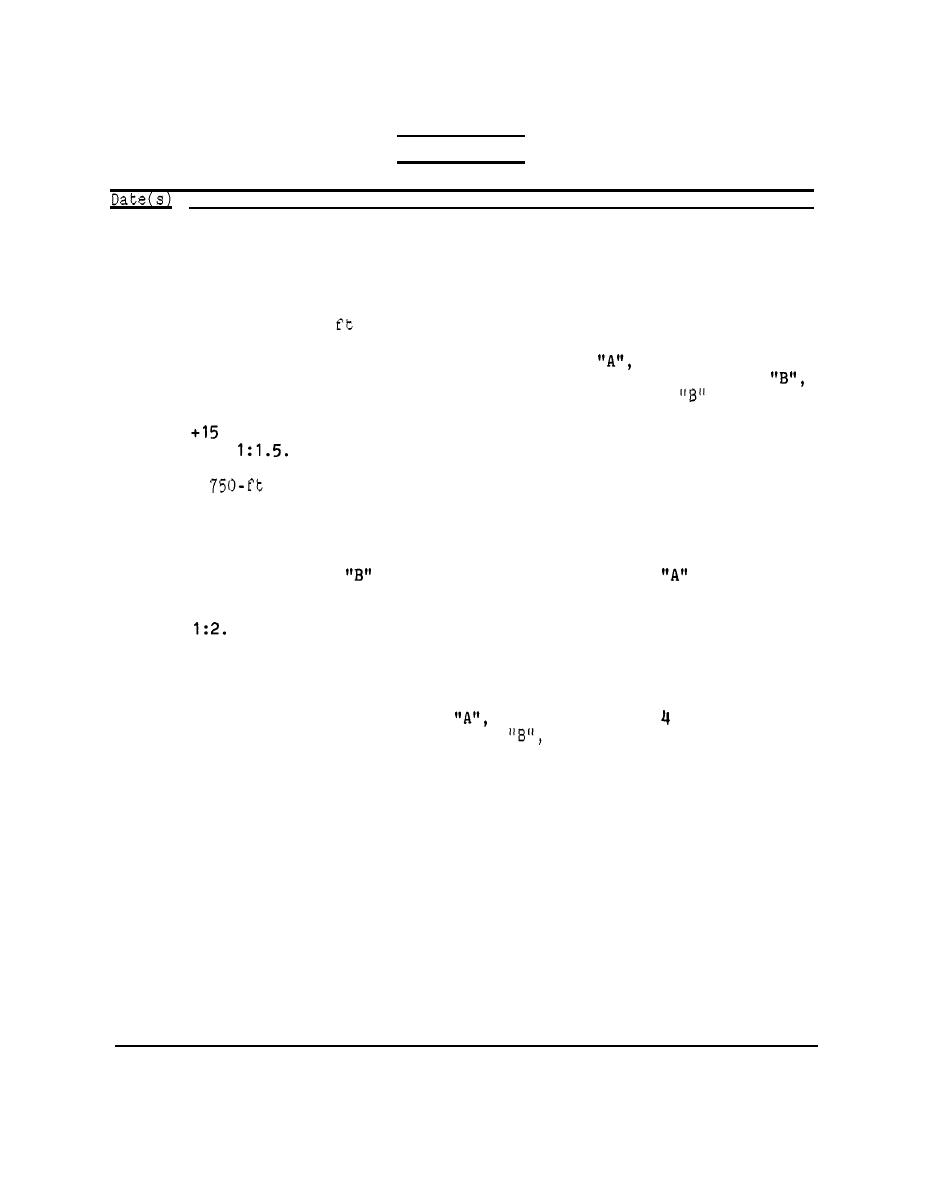
Table 24
Coquille River
Bandon, Oregon
Construction and Rehabilitation History
The jetties were authorized.
1880
Two high-tide, rubble-mound jetties were completed. The north jetty
1907
was 3,450 ft long; the south jetty was 2,700 ft long.
of the north jetty was rerocked and capped with
The outer 1,600
1942
concrete requiring an estimated 55,000 tons of stone and 10,000 cu yd
of concrete. The stone was 60 percent class
weighing between 1
ton and 10 tons with an average of 6 tons, and 40 percent class
weighing between 50 lb and 1 ton, with half the class
stone
weighing over 500 lb. The crest of the concrete cap was at elevation
ft mllw, the crest of the jetty was 34 ft wide, and side slopes
were
shoreward extension was added to the east end of the north
1951
A
jetty.
The outer 450 ft of the south jetty was repaired with 30-35,000 tons
1954
of stone. Capstones were of an 8-ton average with a 6-ton minimum,
stone over 2 tons, with select
stones up to
and the core was
10 tons on the west end slope at the outer end of the jetty. The
crest was 20 ft wide at elevation +20 ft mllw, and side slopes were
The design was for an average storm wave height of 10 to 12 ft.
The north jetty was repaired, including placing concrete under the
1956
jetty cap in voids caused by erosion of the cap foundation stones and
placing jetty stone along the north and south sides of the jetty cap.
Stones were 50 percent class
weighing at least tons and aver-
aging 6 tons, and 50 percent class
weighing at least 1 ton and
averaging 2 tons.
The small-boat basin was constructed at Bandon, Oregon, including
1982
construction of a rubble-mound breakwater about 350 ft long with a
crest elevation of +14 ft mllw and a crest width of 6 ft.
The harbor and cross sections of the jetties are illustrated in
1985
is still functional. The south jetty is in good condition.
120



 Previous Page
Previous Page
